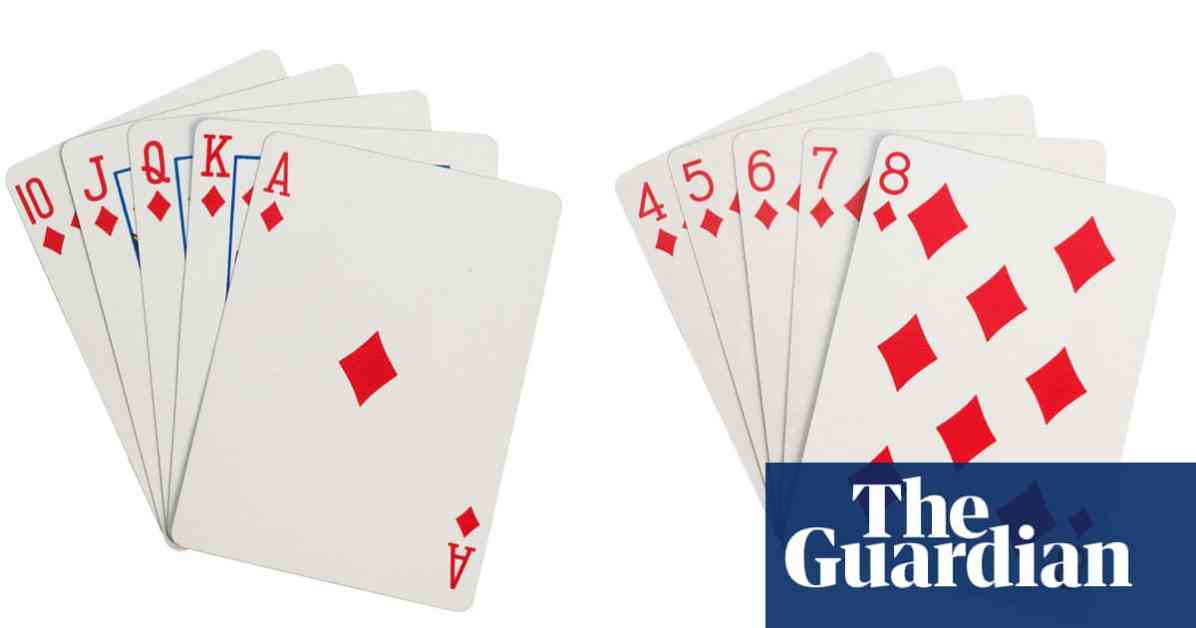Cracking the Poker Puzzle: Tips to Solve the Tricky Riddle
Earlier today, I presented two mind-bending puzzles extracted from my latest book, “Think Twice: Solve the Simple Puzzles (Almost) Everyone Gets Wrong.” Let’s revisit these puzzles and uncover their solutions.
Pint-sized Problem
The first puzzle challenges you to determine which is longer: the height of a pint glass or the circumference of its rim. While many may initially think the height is longer, the reality is quite surprising.
In the context of continental style pint glasses, the circumference of the rim actually surpasses the height. This revelation often catches people off guard, as they are accustomed to perceiving lengths as straight lines rather than curves.
The key to unlocking this puzzle lies in the mathematical concept of circumference, which is calculated as pi (approximately 3.14) times the diameter of the circle. Even with a slim Peroni glass, the circumference of the rim outstrips the height, highlighting our inherent difficulty in intuiting circumferences.
The lesson here is clear: never underestimate the power of pi in a pint glass!
Fool House
In the second puzzle, you are tasked with determining the stronger hand in a game of poker. Presented with two hands – AAAKK and AAA99 – players often make the mistake of focusing solely on the card values without considering the broader context.
While the first hand appears to have higher value cards, it is crucial to recognize that both hands cannot simultaneously exist in a game of poker due to the limited number of cards in a single deck. Therefore, the notion of strength in this puzzle pertains to the hand that puts a player in a more advantageous position.
Upon closer examination, the AAA99 hand emerges as the stronger choice, as it blocks more potential straight flush combinations compared to AAAKK. This subtle advantage may seem minor, but in the strategic realm of poker, every edge counts.
Unraveling the Poker Puzzle
Poker, with its intricate blend of skill and chance, has captivated players for generations. As a game of strategy and psychology, mastering poker requires a deep understanding of its nuances and complexities.
At its core, poker revolves around the interplay of probability, psychology, and risk assessment. Players must not only analyze their own hands but also anticipate the moves and intentions of their opponents. This delicate balance of calculation and intuition is what sets apart skilled poker players from the rest.
In the realm of poker puzzles, such as the one presented earlier, the key lies in discerning the underlying principles at play. By approaching the game with a sharp analytical mind and a keen eye for detail, players can unravel even the most intricate poker riddles.
As you delve into the world of poker, remember that success in the game is not solely determined by the cards you hold but by the decisions you make. Whether it’s bluffing your way to victory or strategically outmaneuvering your opponents, poker is a game of wits and strategy.
Conclusion
In conclusion, the art of solving puzzles, whether in poker or everyday life, requires a combination of logic, creativity, and perseverance. By honing your problem-solving skills and embracing challenges with an open mind, you can unravel even the most perplexing riddles.
So, the next time you encounter a puzzling situation, remember to think twice, analyze the problem from all angles, and trust in your ability to crack the code. With practice and determination, you can conquer any puzzle that comes your way.
As you navigate the intricate world of puzzles and games, may you find joy in the journey of discovery and the thrill of unraveling the mysteries that lie before you. Happy puzzling!


